For gardeners, knowing the size of a garden hose is vital for completing outdoor maintenance jobs with ease. Without having the appropriate size of hose pipe, you may find yourself unable to water your plants properly or route water-filled equipment such as sprinklers correctly. Not to mention, having too much length will result in wasted time spent reeling it back up again after use! Fortunately, this guide on how to measure a garden hose size accurately covers all you need to know about finding the ideal fit for your gardening endeavors.
Standard Garden Hose Sizes
When selecting a garden hose, it is important to consider the size of the hose in relation to the job. Here are the most common standard sizes for garden hoses:
Standard Hose
The most common type of garden hose is the standard hose, which is usually sold in pre-set lengths such as 25’, 50’ and 100’.
When measuring a standard hose size, it’s important to include the fitting length so that you can make sure it will fit into your tap or spigot without any issues.Soaker Hose
Soaker hoses are typically used for watering hard-to-reach gardens or those with plants that need a slow and steady drip feed.
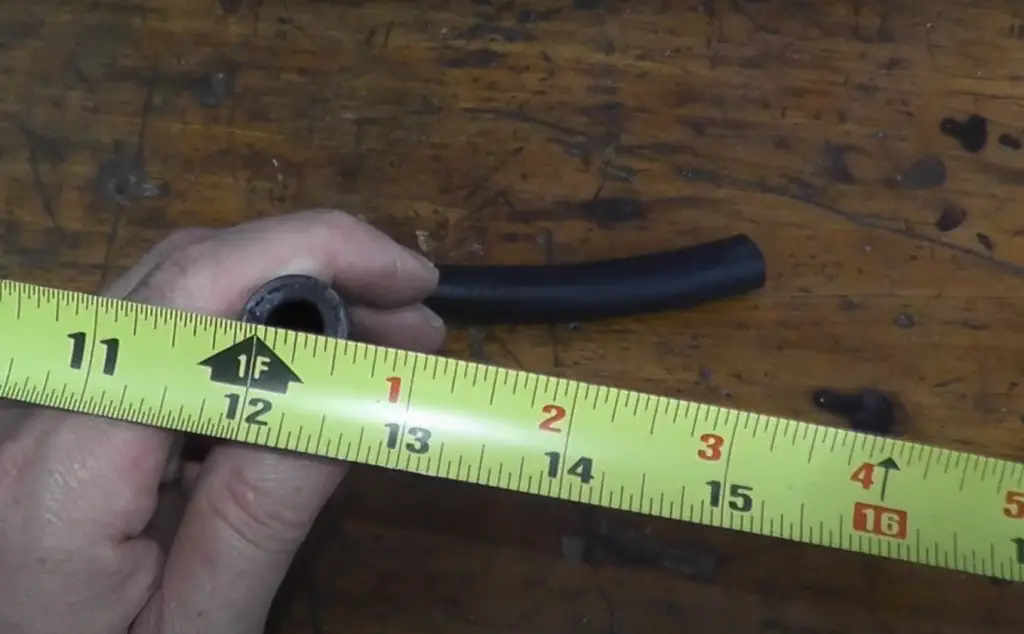
These are generally available in the same sizes as standard hoses, but they have an additional kinked design featuring tiny pores along their length that allow water to escape at a consistent rate. [2] Soaker hoses can be difficult to measure accurately due to their flexible nature, so it’s best to add an extra foot onto your measurements just to be sure you get enough hose pipe for your watering needs.
Expandable Hose
An expandable hose is a relatively new type of garden hose and is quickly becoming a popular option for many gardeners. These hoses are made from an innovative material that expands up to three times its original size when water is turned on, allowing you to easily reach those hard-to-reach areas in your garden without having to deal with excess length during storage. [3] To measure the length of this type of hose, simply squeeze the hose handle and count how many feet it expands to—typically between 10’–50’ depending on the model.
Commercial Hose
Commercial hoses are generally made from stronger and denser materials than standard or expandable hoses and are designed for more heavy-duty use. [4] These are typically sold in pre-set lengths ranging from anywhere between 25’–300’ and have diameters of up to 1-inch. As these hoses can be quite bulky, it’s important to measure the full length, including any fittings, so that you don’t buy too much hose and end up with a jumbled mess of excess pipe. By being familiar with the different types of garden hoses available and knowing how to measure them accurately, you can ensure that you always have the ideal size hose for your gardening needs.
How to Measure Garden Hose Diameter
To get an accurate measurement of the size of a garden hose, it’s important to measure its diameter. This is done by measuring the width (or thickness) of the hose in either millimeters or inches.
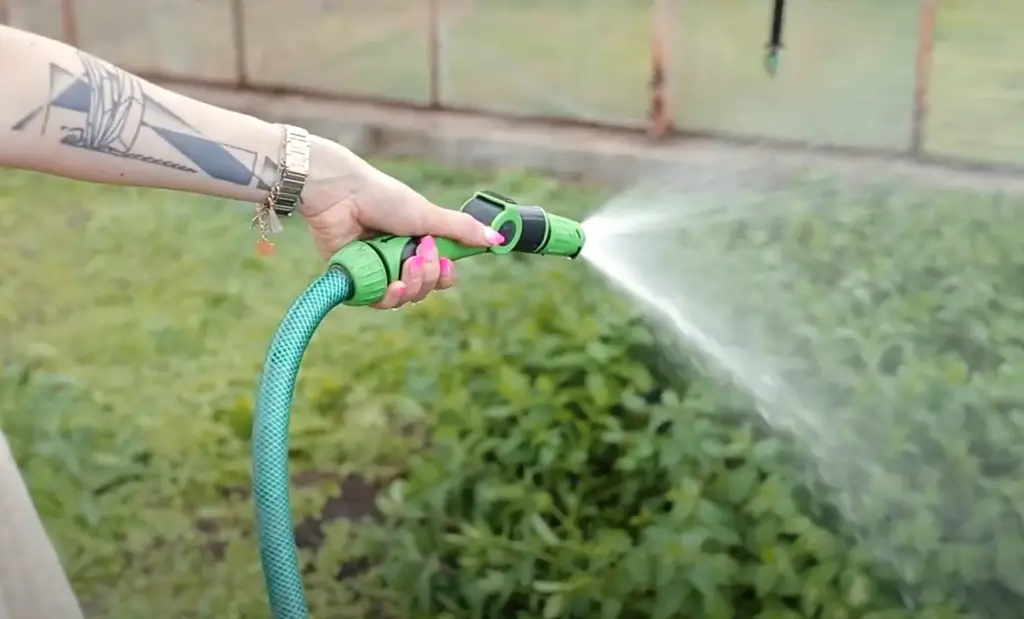
To do this, you will need a tape measure, digital caliper, paper tube, wooden dowels or drill bits.
Basic Tools for Measuring Garden Hose Diameter
Here is step-by-step guide on how to measure garden hose diameter using tools that were mentioned above:
Tape Measure
Using a tape measure is one of the simplest techniques for measuring garden hose diameter. To use this method, you will need a flexible tape measure and a ruler or straight edge.
- Step 1: Unroll the tape measure and find the spot where it crosses over itself. This should be near the middle of the tape. Mark this spot with your finger or pencil.
- Step 2: Place one end of the straight edge at this spot and extend it to one end of the tape measure. Push down on the side of the straight edge closest to you so that it cuts through any creases in the tape measure, making sure that it’s as flat as possible. Make sure not to pull too hard, because you don’t want to stretch or damage the tape measure.
- Step 3: Measure the distance between the starting point and the end of the tape measure with a ruler or straight edge. This will give you an approximate diameter for your garden hose.
Tips: When measuring with a tape measure, make sure to keep the tape as straight and flat as possible when laying it out. Also, if you don’t have a straight edge, you can use your finger to feel for any kinks or creases in the tape measure that may affect your measurements.
Digital Caliper
Using a digital caliper is a more precise way to measure garden hose diameter.
You will need the digital caliper, a ruler or straight edge, and something like a piece of wood or metal to act as a base for the caliper.- Step 1: Place one end of the straight edge on your chosen surface and extend it across to the other side. Put one end of the hose in the center of the straight edge so that it’s centered over it.
- Step 2: Open up the digital caliper by pressing down on its top jaw with your thumb while pushing outwards with your other fingers. Place the digital caliper’s lower jaw on one end of the straight edge, and its upper jaw on the other side. Gently close the jaws until they make contact with both sides of the garden hose.
- Step 3: Read off the diameter measurement from the display window on top of the caliper. This will give you a very accurate measurement for your garden hose diameter.
Tips: When using the digital caliper, make sure you gently close the jaws to avoid damaging or bending the garden hose. Also, if your digital caliper doesn’t have a display window, you may need to use a ruler to read off the measurement.
Paper Tube
Using a paper tube is another simple technique for measuring garden hose diameter. To use this method, you will need a paper tube and a ruler or straight edge.
- Step 1: Place one end of the straight edge on your chosen surface and extend it across to the other side. Put one end of the hose in the center of the straight edge so that it’s centered over it.
- Step 2: Slide the paper tube lengthwise onto one end of the garden hose. Make sure that it fits snugly but doesn’t damage the hose in any way. You may need to adjust it until you get a secure fit.
- Step 3: Measure the inside diameter of the paper tube with a ruler or straight edge. This will give you an approximate measurement for your garden hose diameter.
Tips: When using the paper tube, make sure to adjust it until you get a snug fit. If the paper tube fits too loosely on the hose, your measurements may not be accurate.
Wooden Dowels
Using wooden dowels is another easy way to measure garden hose diameter. You will need two wooden dowels and a ruler or straight edge.
- Step 1: Place one end of the straight edge on your chosen surface and extend it across to the other side. Put one end of the hose in the center of the straight edge so that it’s centered over it.
- Step 2: Insert one of the wooden dowels into each end of the garden hose, making sure they fit snugly but not too tightly.
- Step 3: Measure the distance between both ends of the dowels using a ruler or straight edge. This will give you an approximate diameter for your garden hose.
Tips: It’s important to make sure the dowels fit snugly but not so tight that they become stuck in the hose.
Also check if the straight edge is perfectly straight and not bowed in any areas.
Drill Bits
Using drill bits is another method for measuring garden hose diameter. You will need a set of drill bits, a ruler or straight edge, and something like a piece of wood or metal to act as a base for the drill bit.
- Step 1: Place one end of the straight edge on your chosen surface and extend it across to the other side. Put one end of the hose in the center of the straight edge so that it’s centered over it.
- Step 2: Insert one of the drill bits into each end of the garden hose, making sure they fit snugly but not too tightly.
- Step 3: Measure the inside diameter of both ends using a ruler or straight edge. This will give you an approximate diameter for your garden hose.
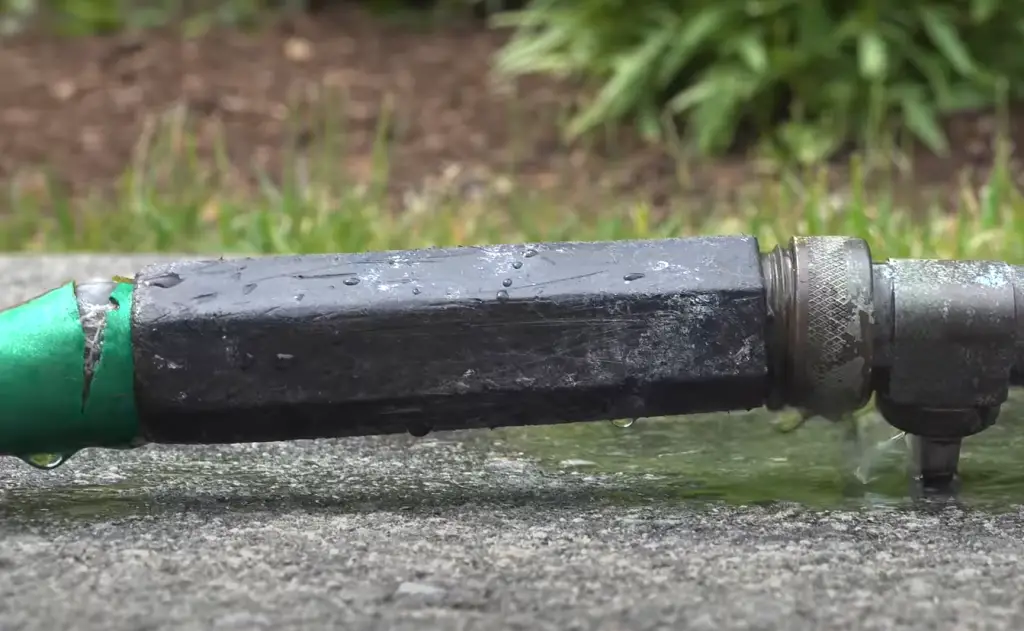
Tips: When using this method, make sure to use the smallest drill bit possible so that you don’t damage or deform the garden hose.
The Importance Of Knowing Your Hose Diameter
When it comes to gardening, knowing your hose diameter can make a world of difference. Imagine trying to use a hose that is too narrow for the job at hand – the water pressure would be weak and the flow would be slow, making it more difficult to water your plants effectively. On the other hand, if your hose is too wide, you risk wasting water and spending more money on your water bill than necessary.
For these reasons, it is important to take the time to accurately measure your garden hose diameter before you purchase any fittings or accessories for it.
How Hose Diameter Affects Water Flow
In addition to choosing the right size hose for your needs, you may also want to consider how hose diameter affects water flow. Generally speaking, the larger the diameter of your hose, the more unrestricted flow of water you will have. Conversely, a narrower diameter will restrict the amount of water that can travel through it due to friction and resistance in the walls of the hose. Therefore, it’s important to select a garden hose with an appropriate diameter based on your specific requirements – too small and you’ll have weak pressure and slow flow; too large and you could be wasting precious resources like money and time. Knowing your hose diameter is key to making sure your garden gets what it needs!
What Is a Garden Hose Thread?
A garden hose thread is a standardized screw thread used for attaching garden hoses to water spigots and other fittings. The most common type of garden hose thread is the National Pipe Tapered (NPT), which has a tapered, conical shape that creates an effective seal when mated with another fitting. Other types of garden hose threads include British Standard Pipe Parallel (BSPP) or Garden Hose Threads (GHT).

Knowing the type of thread you need for your specific application will ensure that your connections are secure and won’t leak. [5]
What Is Garden Hose Fitting Thread Size?
Garden hose fitting thread size is the measurement of the diameter of the threads in millimeters. When selecting a garden hose and fittings, it’s important to make sure that they both have matching thread sizes in order for them to be compatible.
Generally speaking, the most common garden hose thread size is 1/2“, but other sizes may also be available depending on what type of fittings you are using.
How Do You Measure the Size of a Hose Thread?
The best way to measure the size of a hose thread is with a digital caliper. Calipers are precision tools that allow you to precisely measure the outer and inner diameters of your threads. To measure your threads, simply place one jaw of the caliper inside the thread and adjust the other until it fits snugly without binding. When the caliper is locked, the measured diameter will be displayed on the digital display.
However, these will likely only provide you with an approximate diameter rather than an exact reading.FAQ
Is Hose Diameter Inside or Outside?
The diameter of a hose refers to the distance across its inner circumference. Therefore, when measuring garden hose diameter, you should be measuring the inside of the hose – not its outside. This is an important distinction to make as selecting fittings and connectors that are too large may cause leaks due to a poor fit.
What is a Standard Garden Hose Size?
The standard size for a garden hose is 5/8″, with 1/2″ and 3/4″ sizes also being popular.
What is the Difference Between a 5 ‘8 and 3 ’4 Garden Hose?
The main difference between a 5/8″ and 3/4″ garden hose is the diameter. A 5/8″ hose has an inner circumference of 0.62″ (1.57 cm), while a 3/4″ hose has an inner circumference of 0.75″ (1.90 cm).
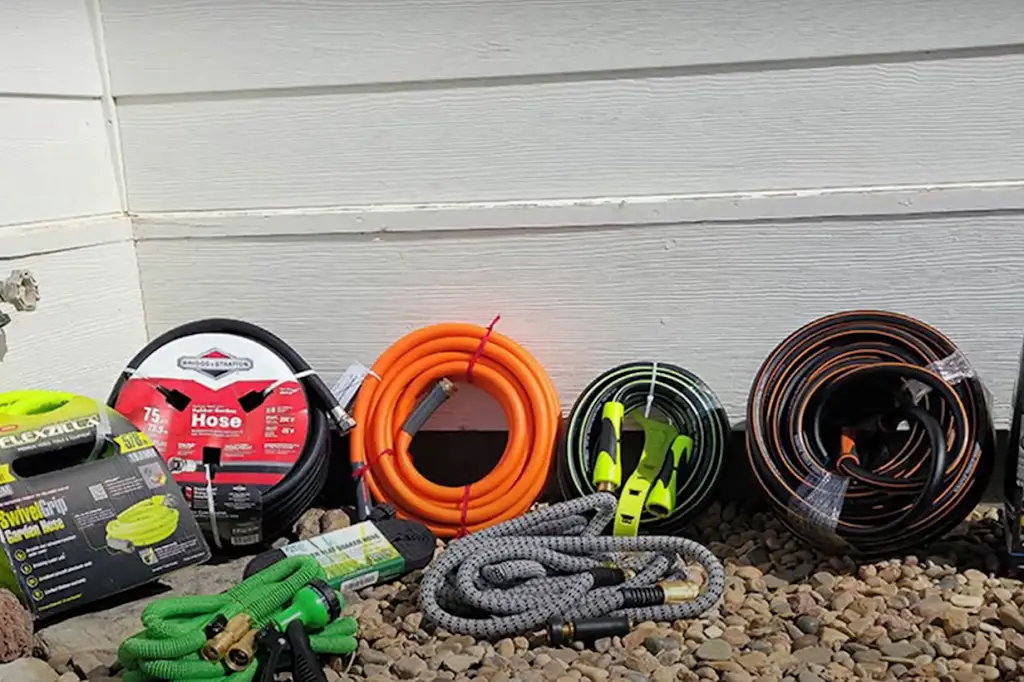
Therefore, the flow rate of a 3/4″ hose will be greater than that of a 5/8″ hose. Additionally, the weight and cost of the 3/4″ hose may also be higher due to its larger size.
Does a Bigger Hose Increase Water Pressure?
In general, a larger hose will not necessarily increase water pressure. While it may allow for more unrestricted water flow due to its larger diameter, it could also reduce the pressure of the water as it travels through. This is because a wider hose creates more friction and resistance in the walls of the hose, which can slow down the speed of the water and decrease its pressure.
What is Normal Hose Pressure?
Hose pressure typically ranges from 10 to 15 PSI (Pounds per Square Inch). It is important to select a hose with the appropriate pressure rating for your application in order to achieve the desired results. For example, if you need a powerful stream of water, then a higher pressure rated hose may be necessary. On the other hand, if you are looking for a gentle spray, then a lower pressure rated hose may be more suitable.
Useful Video: How To Measure the Diameter Of Any Hose
Conclusions
Measuring your garden hose diameter and selecting the right size connectors are essential steps in making sure your garden is well-fed and healthy. By knowing the type of thread you have, the correct diameter of your chosen hose, and the required connector size, you can ensure that your garden hose is connected properly and won’t leak. With a bit of knowledge and careful measuring, you can save time, money, and resources while keeping your plants happy and hydrated. So go ahead – grab your tape measure and make sure you’re using the right size hose for your garden!
References:
- https://www.electronicshub.org/5-8-vs-3-4-inch-hose/#:~:text=5%2F8%2Dinch%20Hose,-Before%20we%20can&text=A%20%E2%85%9D%20inch%20water%20hose,diameter%2C%20and%20hence%20the%20name.
- https://swanhose.com/blogs/soaker-hoses/what-is-a-soaker-hose-and-how-does-it-work
- https://www.bobvila.com/articles/best-garden-hose/
- https://swanhose.com/blogs/all-about-hoses/guide-on-selecting-and-buying-a-garden-water-hose#:~:text=Heavy%2Dduty%20garden%20hoses%2C%20such,addition%20to%20watering%20your%20plants.
- https://pickhose.com/garden-hose-thread-vs-npt/
- https://www.hoseassemblytips.com/measure-threads-hydraulic-fitting/





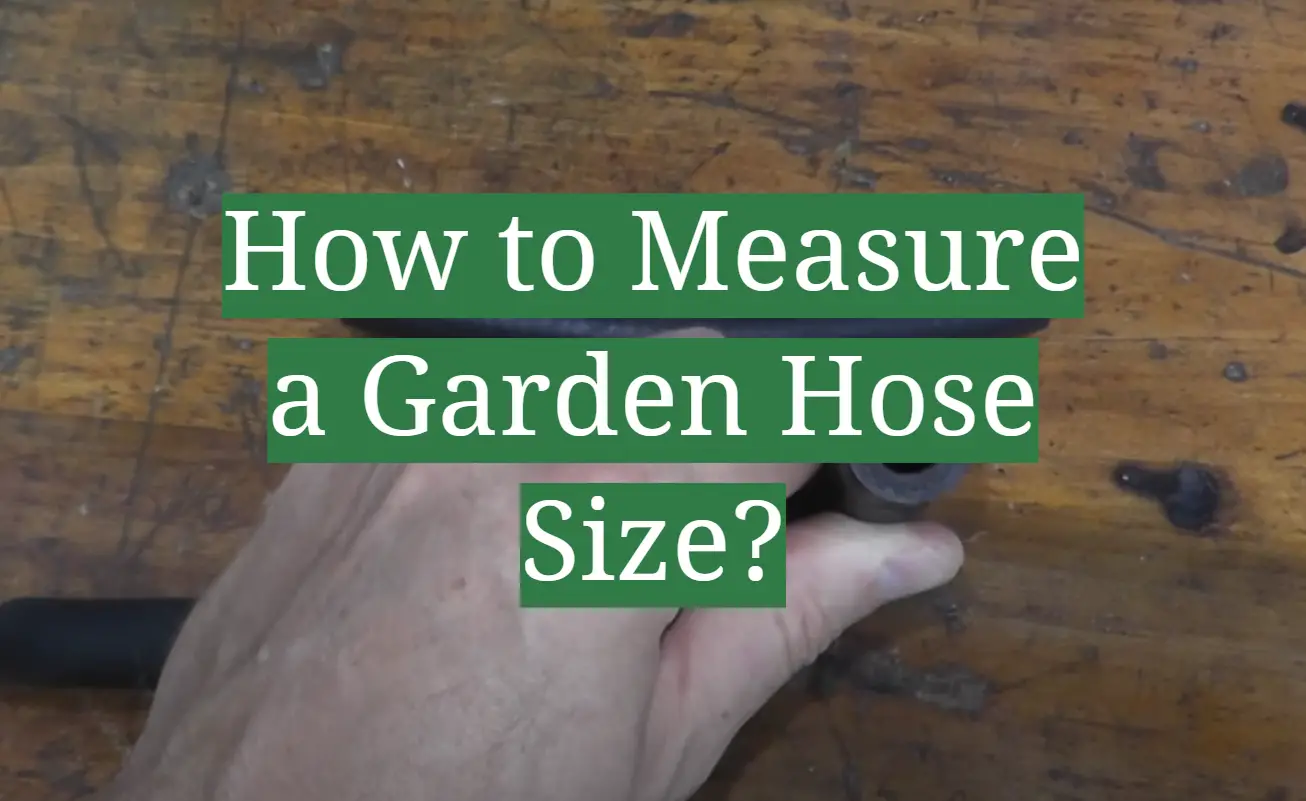
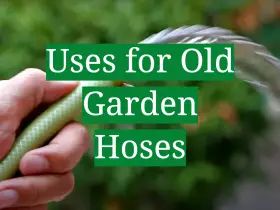
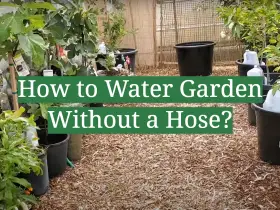
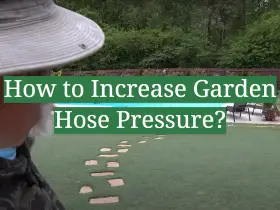
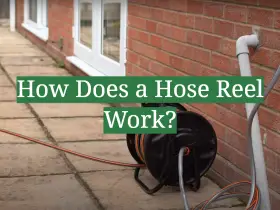
Leave a Reply
View Comments